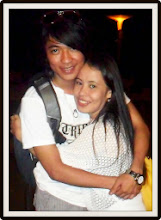
Traveling to the northern part of the island Luzon will bring you not only to beautiful landscapes with amazing rice terraces. It will bring you also to the regions with remote villages and colorful and traditional living upland tribal communities. Their ancestors constructed the fascinating rice terraces with the perfect working irrigation systems. These mountain tribes still distinguish themselves by their specific cultural expression and their skills.
They have skills in making bowls, baskets, weapons and clothing. It were the Bontocs and the Ifugao people who built up the rice terraces. Traveling in the provinces of Ifugao or other provinces in Luzon, will make clear to you that the way of living of these people didn't change. They are still living and working as in the past. Many tourists decide to make the long bus-trip from Manila to these provinces especially to meet the Ifugao, the Bontocs, the Kankanays or other tribes.
n the past the Ifugao were feared head-hunters, just as other tribes in the mountainous regions of northern Luzon. The war-dance (the bangibang) is one of the cultural remnants of the time of tribal conflict
This dance is traditionally held on the walls of the rice terraces by the men, equipped with spears, axes and wooden shields and a headdress made of leaves.
Typical houses of the Ifugao
The Ifugao build their houses on piles. The pyramid-shaped roof is used as a bedroom, kitchen and storeroom. All in one space! There are no windows. To please the gods, the skull of a sacrificed pig is fixed on the outside of the house. The residents still live in the same type of houses as their ancestors.
Skills of the Ifugao
The Ifugao still practice the same skills as in the past: Woodcarving and weaving clothes. They discovered the tourists as a welcome client for their products in a time that the most young Ifugao prefer Western clothes.
Not in the culture of the Ifugao. Like with the Bontocs, their funerals are not only a sad event because of the lost of the person. There is also a celebration during days, because of the believe of a better life after death. Six years after the body is buried, the bones are dug up, after which a second celebration will take place. This is one time repeated after another six years.
Thursday, March 8, 2007
Mountain tribes in Northern Luzon
Subscribe to:
Post Comments (Atom)









0 comments:
Post a Comment